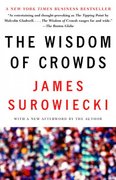Question
An auctioneer wants to sell a house using either a first-price or second-price auction. The table below shows the auctioneer's information about the bidders. She
An auctioneer wants to sell a house using either a first-price or second-price auction. The table below shows the auctioneer's information about the bidders. She knows that either 2 or 3 bidders will participate in the auction, each case occurring with a probability of 50%. The auctioneer estimates that the value of Bidder 1 for the house is $360,000. The value of Bidder 2 is estimated to be $210,000. In case the third bidder also participates in the auction, his value is estimated to be $100,000. When making their bids, the bidders know how many other bidders participate in the auction.
(a) Compute the auctioneer's expected revenue for the first-price and second-price auction. Which auction should the auctioneer use to maximize the expected revenue from selling the house?
(b) The bidding strategies we derived in class assume risk-neutral bidders. How would the bidding strategies and your answer to (a) change if bidders were risk-averse? You don't need to compute the new equilibrium bidding strategies, but you should explain intuitively how the bidding strategy in the first-price and second-price auction would change and what this means for the expected revenues.

Step by Step Solution
There are 3 Steps involved in it
Step: 1

Get Instant Access to Expert-Tailored Solutions
See step-by-step solutions with expert insights and AI powered tools for academic success
Step: 2

Step: 3

Ace Your Homework with AI
Get the answers you need in no time with our AI-driven, step-by-step assistance
Get Started


